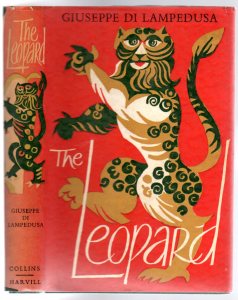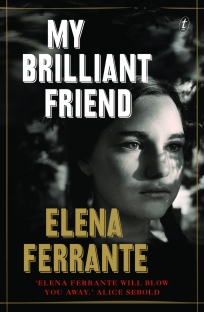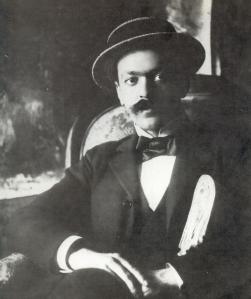There’s no shortage of people writing about Italy – how many more Italian travel memoirs can there be? The large number is understandable when you begin to explore the many layers of culture, history, food, language not to mention regional differences in this relatively small (compared to Australia) country.

My first forays in my Italian obsession were via travel writers/observers such as Tim Parks’ Italian Ways and his marvellous Italian Neighbours. There are many others. Even George Negus wrote one – The World from Italy. I then explored some history and politics via David Gilmour’s The Pursuit of Italy and Australian Peter Robb’s Midnight in Sicily which exposes the role of the mafia in contemporary Italian politics. A great read.
I only began to read Italian-born fiction writers recently. The three of most interest to me thus far are Naples based Elena Ferrante, Sicilian Giuseppe Tomasi di Lampedusa and Italo Svevo from Trieste.
These three are about as diverse as you could imagine. They explore dramatically different era’s regions and themes. Ferrante sets her stories in the poverty of Naples (what a wonderfully mad city) and her quartet of novels span fifty years from 1955 to 2005. Lampedusa explores Siciy between 1860 and 1910 and Svevo‘s novels are set in Trieste in the early 20th Century.
All three writers have fascinating personal stories. Ferrante is Naples born but has never been identified. She writes under a pseudonym. Lampedusa died at the age of 61, a year before his one and only novel, The Leopard, was published in 1958. Italo Svevo only achieved literary recognition and mainstream publication in his sixties (he died in 1928 aged 67). Svevo (born Aron Ettore Schmitz), by coincidence, also wrote under a pseudonym.

Lampedusa was the son of an aristocratic family and The Leopard tells the story of the demise of the old ruling class as Italy moves towards a united country in 1860 (Gabaldi has just entered Marsala to begin his campaign). Told with an honesty and an acceptance of the inevitability of change, it tracks the decline of the House of Salina through the eyes of the Prince of Salina and the rise of his nephew, Tancredi, who opportunistically supports the new order and ‘marries down’ in marrying the beautiful peasant Angelica whose family is on the rise, thus securing his future. Written without sentimentality or nostalgia it offers a wonderful insight into power and humanity and to a Sicily still recognizable more than a century later. At its centre it is deeply poetic.
Svevo was also a late bloomer. Of German Jewish background (his mother was Italian), he was born in Trieste in 1861 and married into a business family (industrial paint). He wrote from a young age and self-published a number of novels in his twenties and early thirties but, achieving little success or recognition as an author, he stopped writing and devoted himself to the family business. It was not until his late forties that he again began writing. This occurred as a result of his chance meeting with a young James Joyce who came to live in Trieste as a twenty five year old and whom Svevo engaged to teach him English. Joyce lived and wrote in Trieste over a period of ten years where he completed Portrait of an Artist as a Young Man and began early drafts of Ulysses (Leopold Bloom is said to be based on Svevo). Joyce was long gone by the time Svevo again self-published his novel Zeno’s Conscience in 1923 but it was not until Joyce’s French agent published a translation that it was acclaimed as a comic masterpiece. Svevo died soon after (1928) in a car accident. Described as a pioneer of the psychological novel in Italy, it follows the life of a hapless young man as he stumbles into marriage, infidelity, business, all the time with a preoccupation with his health and death. Written as an account as told to his psychiatrist, it is a gently self revealing portrait of a character in constant conflict with himself. It is packed with wry humour.

Ferrante, the last of the trilogy of writers, writes about the lives of two friends Lila and Elena, one bright, beautiful and feisty, the other, highly intelligent but in awe of her beautiful friend. Set in the backstreets of Naples in the 1950s My Brilliant Friend is the first of four novels which follow this pair over a fifty year period. One is destined to escape her working class origins, the other becomes a survivor in a harsh social environment dominated by family. The writing in My Brilliant Friend is rich and sensual and beautifully captures the emergence of these two girls as they grapple with the realities of poverty, family and community expectations, and the constraints of gender in their journey towards adulthood and independence. The Italy of the fifties is raw and palpable.
Of course there are many more novels set in Italy – Hemingway’s A Farewell to Arms for one and our own Venero Armanno (The Volcano) another. Italy is such a great country and a country of many great reads.
© Steve Capelin 2015

1 comment:
Grazie per aver condiviso il suo bel post. Mi piace questo articolo. Compra ora meglio
Hotel Lampedusa
Post a Comment